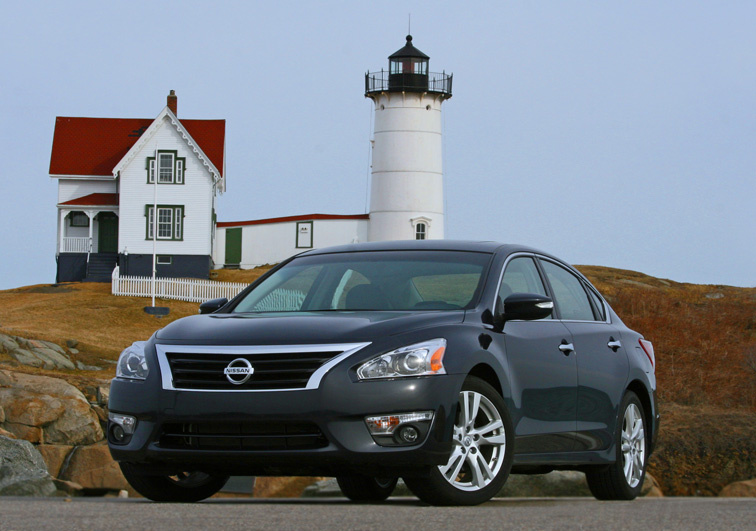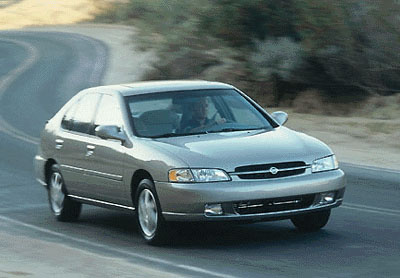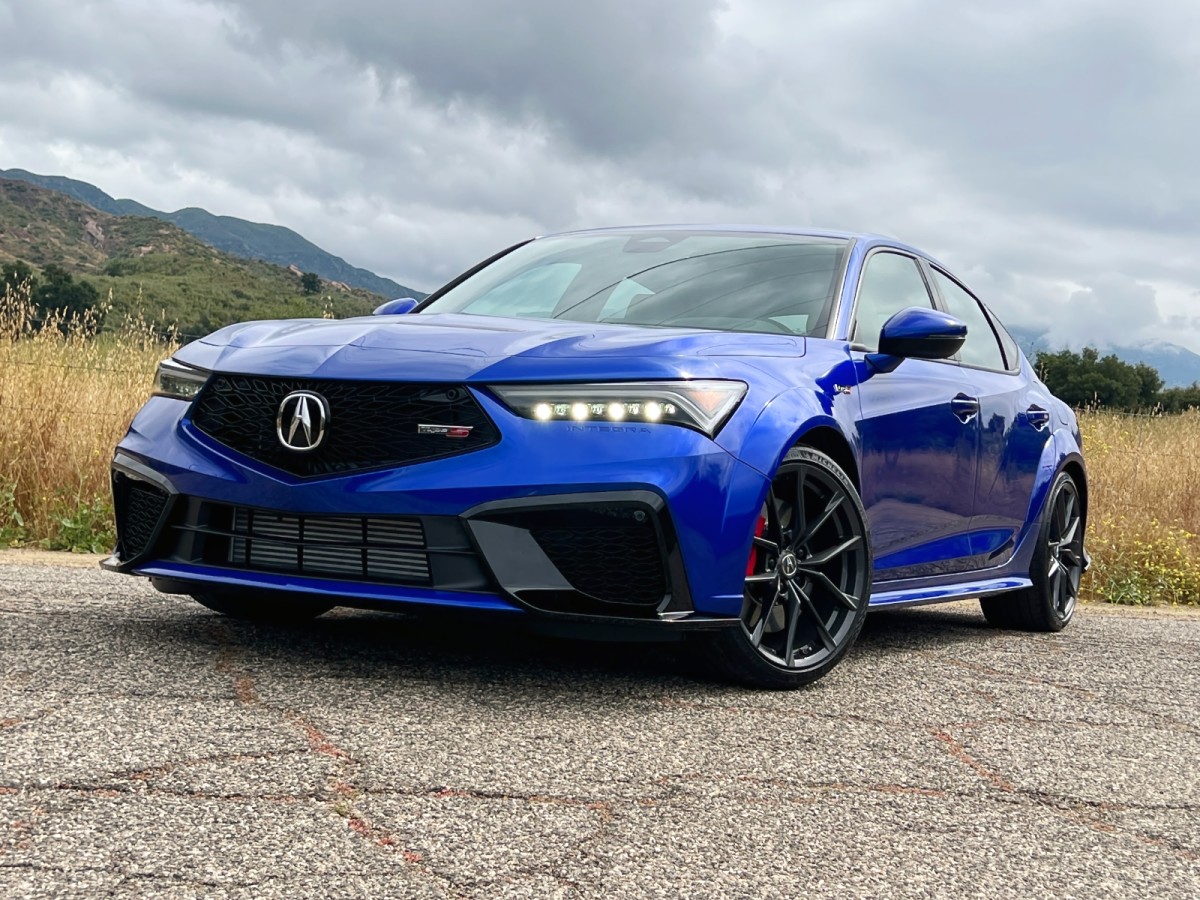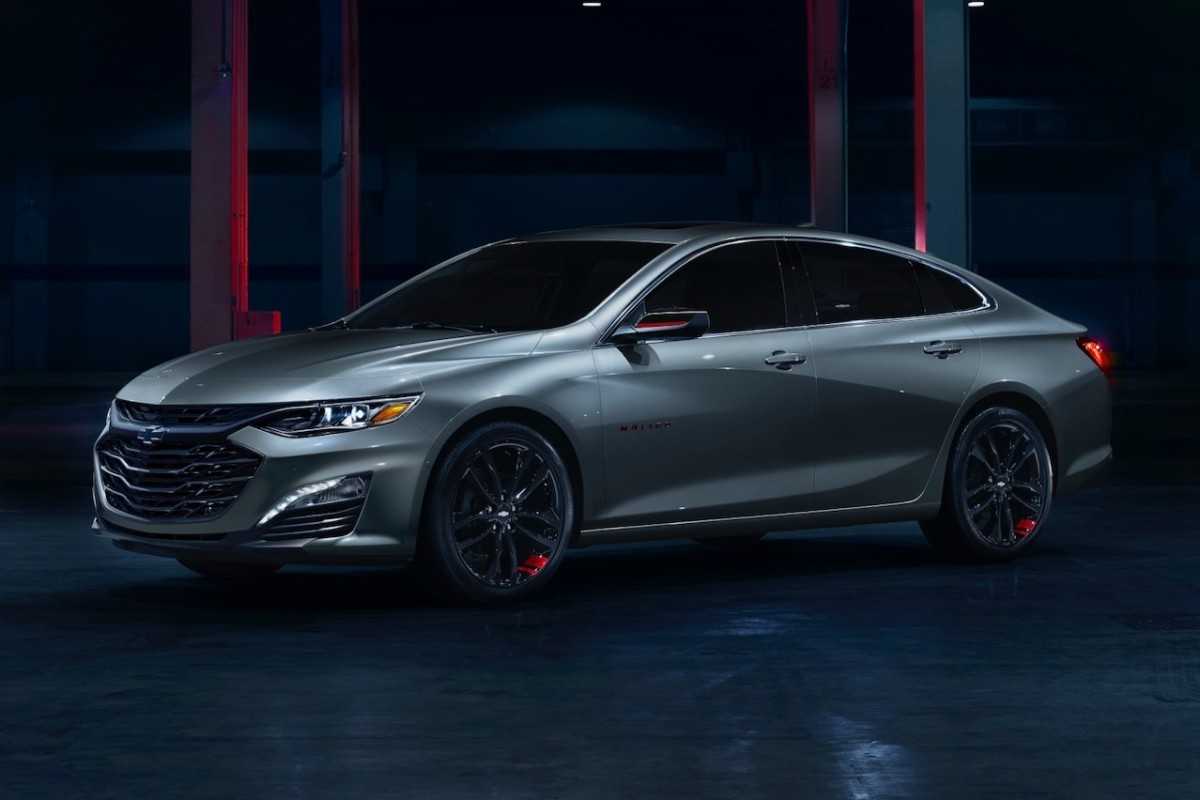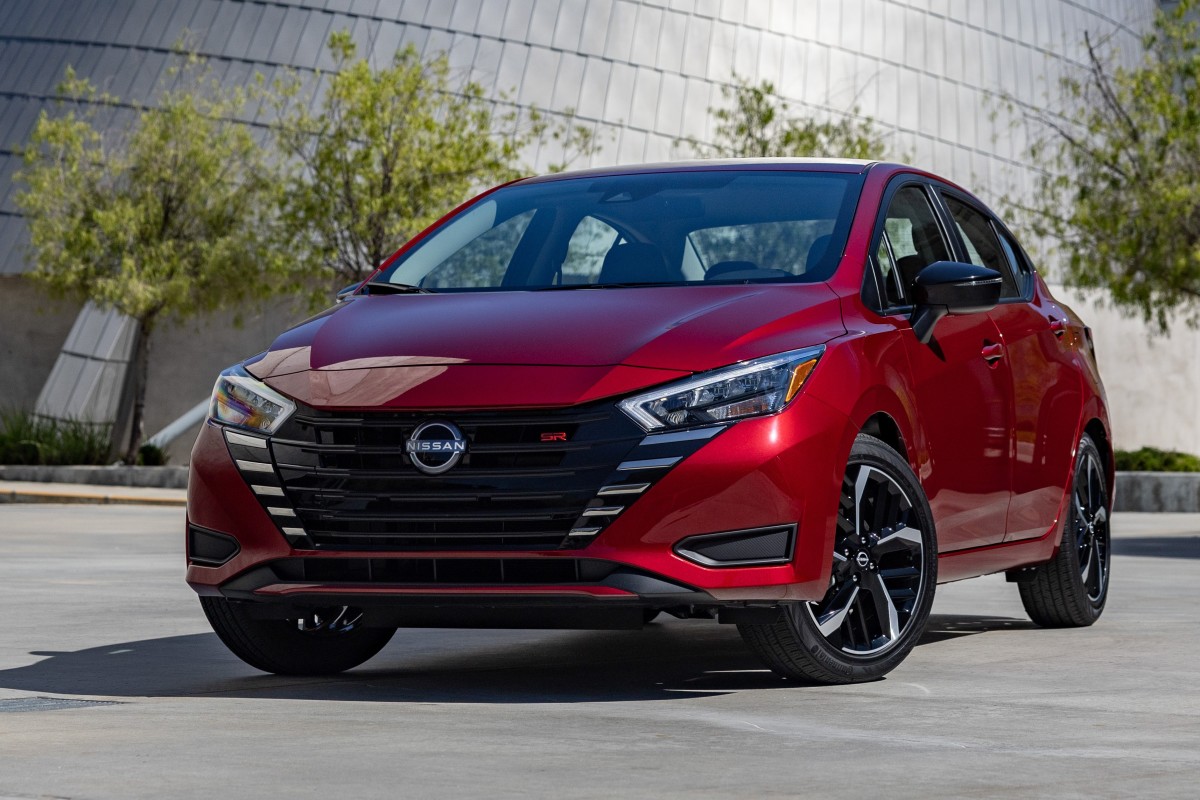The Nissan Altima has been the Japanese automaker’s midsize mainstay in the North American market since 2002, competing directly with sedans such as the Honda Accord, the Kia K5, and the Toyota Camry. However, it wasn’t always this way. The Altima was originally one size smaller and meant as an “in-betweener” that split the difference between midsizes, such as the Accord and the Camry, and compacts, such as the Honda Civic and the Toyota Corolla.
That all changed in the early 2000s, when Nissan decided to move its previous midsize flagship, the Maxima, upmarket and enlarged the Altima to dimensions similar to its big brother. While Maxima sales fell as a result, the Altima boomed. Production rocketed up to over 250,000 sales a year, and sometimes more than 300,000, until consumers’ shift to SUVs and the Covid-19 Pandemic bit into sales of the car’s current generation.
Though it doesn’t sell as well as it used to, the Altima is still a good consumer choice and arguably smarter than it has ever been. The current generation, introduced in 2019, is one of the prettiest models in its class, and offers plenty of room, many driver safety features, and good fuel economy. It’s also available with all-wheel drive, which many rivals are not.
Unfortunately, the model doesn’t have the best reliability record or resale values. It’s also often sold to rental car fleets, further hurting residuals. Those low resale values have led to a pop culture reputation for neglected maintenance and inattentive owners, but there’s still plenty of value to be had here. Two- or three-year-old Altimas can be had at steep discounts, and they still have most of the virtues of a brand new one.
Here, we’ve outlined each of the Altima’s generations in detail and provided some pricing and buying advice for each one.
Nissan Altima: Cost, Reliability, and the Best Years to Buy
- Frequently Asked Questions
- Nissan Altima Pros and Cons
- Nissan Altima Generations
- Sixth Generation (2019–present)
- Fifth Generation (2013-2018)
- Fourth Generation (2007–2012 plus 2013 Nissan Altima Coupe)
- Third Generation (2002-2006)
- Second Generation (1998-2001)
- First Generation (1993-1997)
Frequently Asked Questions
Which Nissan Altima years are the best?
The first two 1990s Altimas, the 2008 to 2012 fourth-generation model, and the current sixth-generation version (2019 to present) version have the best records in terms of reliability and durability, but even within those generations, not every reliability tracking outlet agrees on which years are best. J.D. Power gives the current Altima “Average” ratings in most years, while Consumer Reports gives it average or below average ratings and finds more problems in 2019 and 2020 models than in other years. Among fourth-generation models, 2008 and 2009 have poorer reliability ratings than other years.
What are the worst Nissan Altima years?
The third-generation Altima (2002 to 2006) and fifth-generation (2013 to 2018) have the worst reliability ratings overall, but again, not every source agrees on every year or every problem. CarComplaints has logged a huge number of owner issues with 2013 to 2015 Altimas, with that first year having more problems than any other. It also shows a large number of complaints about the 2002, 2003, and 2009 Altimas. Consumer Reports doesn’t have data for the oldest Altimas anymore, but the fifth-generation models consistently earn below-average reliability ratings from them.
Is a used Nissan Altima a good deal?
It can be. The Altima has always offered plenty of value in terms of design, performance, or features, and it generally sells for a lower price than an equivalent Honda Accord or Toyota Camry. However, it doesn’t hold its value as well as those models, so while the cost of entry is low, it makes the most sense if you’re going to keep the car long-term. It’s also worth inspecting carefully because some Altimas have been neglected, and former fleet cars may have been used hard. There are many Altimas to choose from, fortunately.
Nissan Altima Pros and Cons
Pros:
- Relatively affordable for a well-equipped mid-sized sedan
- Shares a family resemblance with the upscale Maxima
- All-wheel drive available
Cons:
- CVT transmissions blunt performance, enjoyment
- So-so long-term reliability record
- Poor resale values
Nissan Altima Generations
Sixth Generation (2019–present)
For the 2019 model year, the sixth-generation Nissan Altima donned a sleek, sporty-looking and angular new shape and got fractionally larger overall than both the previous Altima and the flagship Maxima. Surprisingly, the back seat got slightly smaller, with less legroom overall than in the previous generation, but it’s still competitive with rivals like the Hyundai Sonata.
The current generation sticks with a continuously variable transmission (CVT), which dulls the driving experience, but the Altima is more about quiet transportation than excitement. Nissan offers two four-cylinder engines but the vast majority of Altimas use the base version. It’s a 2.5-liter unit making 188 horsepower and 178 pound-feet of torque, or 183 horsepower if you choose all-wheel drive instead of the standard front-wheel drive.
A 2.0-liter turbocharged variable compression (VC) four-cylinder with 236 horsepower and 267 pound-feet of torque is also available on the top model, the Altima SR VC-Turbo, but infrequently ordered (it is perhaps 2% of Altima production). This engine gives the Altima much more speed, but the variable compression system and the CVT seem fundamentally mismatched. It’s quick but not nearly as satisfying to drive as Hyundai’s Elantra N, which is also less expensive.
The 2.5-liter Altimas cost much less, and part of the appeal is that in addition to its pretty styling, you get lots of equipment, or at least can get it. All Altima trims come standard with Safety Shield 360, which includes automatic emergency braking with pedestrian detection, forward-collision warning, rear automatic braking, lane-departure warning, radar-based blind-spot monitoring, rear cross-traffic alert, and high-beam assist.
The only major omission is adaptive cruise control, which Honda, Hyundai, and Kia include but which is optional here. ProPILOT Assist driver-assistance is a long name for “adaptive cruise control,” comprising a forward-facing camera, forward-facing radar, sensors, and an electronic control module to help the driver stay in the center of the driving lane and to maintain vehicle speed. It also maintains a preset distance to the car in front. ProPILOT Assist is optional on the base SV trim but standard on the Nissan Altima SL and SC-VR Turbo.
This helped the Nissan Altima achieve “Top Safety Pick” ratings from the Insurance Institute for Highway Safety (IIHS) in 2019 and 2020, and “Top Safety Pick+” ratings from 2021 to 2023.
Also making up for the lack of performance is a good array of infotainment and connectivity, packaged under Nissan’s “Intelligent Mobility” brand name. This is a fancy moniker for things like the touchscreen (blessedly accompanied by redundant physical knobs and buttons), Bluetooth, Apple CarPlay, Android Auto, avigation, USB ports, a Bose premium audio system, and active noise cancellation.
These are well-equipped cars even at the base S trim level, with standard features like power windows and push-button ignition. The Nissan Altima SR trim is one of the most popular versions, offering upgrades such as 19-inch wheels, paddle shifters, a sport-tuned suspension, and a leather-wrapped shifter. They get good gas mileage, too. Combined EPA fuel economy for the Altima averages around 31 mpg, with the 2.5-liter coming in highest at 32 mpg combined and the VC-Turbo the lowest at 29 mpg.
Altimas don’t have great resale value, and these newer models are no exception. All but the very newest and highest-trim used sixth-gen Altimas can be had for less than $25,000, and most fall in the $17,000 to $23,000 range. It’s possible to by very low mileage and clean ones for even less if you shop long enough and are willing to take a low-trim version. For $16,000, this is a lot of car, and prices may come down further as Nissan incentivizes new models.
Fifth Generation (2013-2018)
The fifth-generation Altima came during a golden age for Nissan. Between 2013 and 2016, Nissan could count on more than 300,000 Altima customers annually, making it both the most popular sedan in Nissan’s lineup and the company’s most popular vehicle, bar none. Aside from the stalwart Toyota Camry and Honda Accord, no other midsize sedan in America could touch its sales.
It was for good reason at the time: The Altima was priced more competitively than the Accord, and Nissan offered many upgrades that increased its value proposition against the Toyota Camry. It was also characterfully styled, though the looks haven’t aged very well. Until crossover SUVs began to dominate the market, if you were looking for a solid family vehicle with decent fuel efficiency, the Altima was often one of the top choices. When new, it often compared well with or even bested vehicles like the Mazda6, Volkswagen Passat, Chevrolet Malibu, and even the Camry.
Today, this design is less of an all-star. Its “Coke Bottle” styling looks a little overwrought, its repair record is below average (but not awful), and many competitors eventually introduced superior designs, but it still packs plenty of value as a used car.
Like its predecessor, the fifth-gen Altima continued to offer a 2.5-liter four-cylinder base engine (179 horsepower and 180 pound-feet of torque) and an optional 3.5-liter V6 (270 horsepower and 258 pound-feet), both mated to continuously variable automatic transmissions (CVTs). Manual transmissions and hybrids, offered in earlier generations, were dropped from this one, and this Altima offered only front-wheel drive. Four-cylinder models returned around 30-31 mpg combined, while V6s could hit 26.
Early on, the interior was dominated by a very conventional center stack of buttons for audio and HVAC controls, with a 7-inch display for navigation optional. The gauge cluster also had a driver assist screen, though not all trims got all the advanced driver assistance features. Blind spot warning, moving object detection, and lane departure warnings were all optional.
The 2016 model year introduced a facelift that dramatically improved its looks, and a lot of effort went into making the passenger cabin as quiet as possible, including new sound deadening and a windshield designed to reduce exterior noise, but it didn’t bring huge tech advancements. The base Nissan Altima 2.5 trim dropped off in 2018, and features like Apple CarPlay and Android Auto became standard along with a backup camera. Most trims had already gotten that feature, but it was still missing from the base model until that year.
As with the newer sixth-generation model, resale values are only so. You can pick up a clean, sub-100,000-mile fifth-generation Altima for anywhere between $8,000 and $15,000 and many older or lower-trim versions for less than $12,000. V6 versions offer better performance but are relatively rare, though they don’t seem to command much of a price premium. 2013 through 2015 models seem to have more problems than later versions, with complaints primarily centering on the transmissions and electrical systems.
Early on in the fifth-generation Altima’s life, the fourth-generation Altima Coupe remained on sale. 2013 Coupes are all part of the previous generation.
Fourth Generation (2007–2012 plus 2013 Nissan Altima Coupe)
The huge success of the third-generation Altima got Nissan thinking about ways to expand the lineup, and that’s just what happened with the fourth-generation model. In the 2000s, many automakers still offered two- and four-door versions of their midsize cars, so for this generation the lightly redesigned Altima sedan (no need to mess with success) was joined by a two-door coupe on a shorter wheelbase. Both vehicles, as in the third generation, shared Nissan’s D platform with the Murano crossover.
With this redesign, the Altima sedan’s wheelbase shrank by about an inch, but interior volume stayed the same as the third-generation car. One year later, Nissan presented the Coupe. Unfortunately for the automaker, that was in 2008, and many car shoppers stopped buying two-doors during the Great Recession. When they can afford fewer cars, consumers tend to stick with the most practical ones. It looked good, but the Altima Coupe never sold as well as Nissan had hoped, and was discontinued after 2013.
While the Coupe was the most visible addition to the lineup, Nissan also added an Altima Hybrid in this generation. This version used a 2.5-liter four-cylinder engine mated to an electric motor, with the combination making 198 system horsepower and 199 pound-feet of torque, mated to a CVT. Despite pretty decent performance and 34 mpg combined fuel economy, the buying public didn’t seem very interested in the Altima hybrid, and it too, was discontinued to due poor sales. The last ones were built in 2011, around the time Nissan was concentrating on the fully-electric Leaf.
The other aspects of the fourth-gen Altima lineup were familiar. The standard engine was a 2.5-liter four-cylinder, making 175 horsepower and 180 pound-feet of torque. A 3.5-liter V6 was again optional, with 270 horsepower and 258 pound-feet. Both engines would carry over into the fifth-generation model. Almost all used a CVT, but some lower-end trims were available with a six-speed manual, a far more satisfying experience if you can find one.
The fourth-generation Altima introduced now-common features such as steering wheel-mounted controls in lower trim levels like the 2.5 S, along with the brand’s “Zero Gravity” front seats, steering wheel, and door and console armrests. 2010 brought a facelift to both the sedan and the coupe and made the continuously variable transmission standard across the board. By the next year, the manual offering was gone entirely.
This generation of Altima has a better repair record than the one that preceded it and the one that came after, with fewer problems in general, most of which are electrical system-related. Resale values aren’t great, and finding clean, low-mileage examples is a real struggle. If you do find one, you can usually get a pretty good deal, as these sell for roughly $5,000 to $9,000. Coupes and Hybrids aren’t any more expensive, but the latter are quite rare and reliability data on them is scant.
Third Generation (2002-2006)
In a major philosophical shift, the third-generation Altima grew into a proper midsize car, got a new factory, and rode an entirely new platform, the FF-L. Built in Tennessee and designed primarily for North America, the new Altima shared that platform with the Maxima and Murano, and all three got sleek new styling. The Altima also got an optional V6 engine for the first time, and it had a considerably roomier interior than its predecessor.
The third generation Altima’s base engine was a 2.5-liter four-cylinder making 175 horsepower and 180 pound-feet of torque, an engine that would continue to power Altimas for many years afterward. The optional V6 made 245 horsepower and 246 pound-feet of torque, which were muscle car numbers back in 2002. It was quickly identified as the hot rod of the sedan class. Buyers could choose from a five-speed manual or a conventional four-speed automatic transmission.
For a short period, until the Toyota Camry and Honda Accord eventually surpassed it, the Nissan Altima reportedly offered the most power and the best handling of any of the mainstream midsize family sedans. During that two-year period it was also marginally larger than the Maxima while earning critical praise for performing similar to that car’s past iterations. With all this in mind, consumers bought third-generation Altimas at a then-unprecedented pace, with sales leaping to more than 200,000 cars a year, a more than 25% gain over the previous Altima.
This Altima’s interior would seem basic today, with its hard plastics and lack of screens, but in 2002, it looked futuristic, roomy, and ergonomically designed. Tan or gray Altima interiors with titanium accents still look pretty modern, but fake wood-trimmed ones have aged less well. Both entertainment and active safety features were limited or nonexistent, but power windows and locks were standard.
Unfortunately, entirely new designs often have teething troubles and this Altima did not enjoy a great reputation for long-term durability. Early years tend to have oil leaks and other engine problems, and eventually they were the subject of a class action lawsuit due to early failures. Electrical issues are also common. They also rust, though many 20-year-old designs have that problem.
These Altimas are very cheap now, and decent ones tend to sell between $3,500 and $7,000, with only modest price premiums for V6s or manual transmissions. The only model potentially worth more is the short-lived SE-R, which came with a six-speed manual and sportier suspension tuning, but many have been used hard. As usual, with such old cars, finding one with maintenance records will help improve a purchase, and a pre-sale inspection is recommended.
Second Generation (1998-2001)
In response to criticism that the original Altima lacked interior space, Nissan made it larger for its second generation in 1998. Three inches longer overall, the designers (again led by U.S. teams at Nissan Design America) also reshaped the cabin and trunk to give it a roomier and airier feel. This did work, but using cheap and plain-looking plastics let down the design’s execution, and lower trim models felt more basic than before. The exterior styling was also considerably more bland.
The first-generation’s 2.4-liter four-cylinder engine carried over largely unchanged until 2000, when it got a five-horsepower bump to 155 in total. As in the first generation, a five-speed manual or four-speed automatic transmission were available, and all Altimas were front-wheel drive. To drive, this Altima was also nothing particularly special. It handled decently and the engine was durable, but zero-to-60 took about nine seconds and it didn’t offer much excitement.
There were four basic trims: the base XE, GXE, sporty SE, and luxury-trimmed GLE. Today, the differences are smaller as they mainly relate to the quality of the materials and appearance. XE and higher trims got pretty white-faced gauges like the Maxima, and GLE models got leather interiors. SE and GLE models also eventually got firmer suspensions for better handling but no additional power. Very late in the run, GXE models offered an available power driver’s seat.
Second-generation Altimas are bland and largely forgotten today, but they were fairly reliable when new. Owner complaints tend to center around cracked intake manifolds, bad manifold gaskets, and rough idling as a result. This isn’t anything that can’t be fixed, but these cars also aren’t worth very much. Even the nicest ones shouldn’t cost more than $6,000, and even less with some searching.
First Generation (1993-1997)
In the early 1980s, when Nissan shelved Datsun's name, its old model names were also replaced. What had been the 510 became the Stanza, and despite some initial success, by 1991, Stanza sales were flat. To get back in the compact-to-midsize game, Nissan completely changed the name and design, creating the first-generation Altima in 1993. The decision to entirely ditch the Stanza name came late in the game, as some early owners’ manuals actually referred to the car as the “Stanza Altima.”
Regardless of the name, the Altima was a much more interesting car than the boxy, plain-jane Stanza, with soft, oval-shaped, almost Jaguar-esque lines. It didn’t hurt that Infiniti, Nissan’s then-still-new luxury brand, had launched a similar-looking luxury car, the J30, only a few months earlier, also drawing positive comparisons to Jaguar. The design came from Nissan Design International (now Nissan Design America), a California studio that the automaker had set up to better cater to American tastes.
Like the Stanza, it was larger than a Honda Civic but smaller than an Accord, with dimensions slightly smaller than 2024’s Nissan Sentra. In Japan, the same design was sold as the Bluebird U13, just as the Stanza and 510 had been based on earlier Japanese Bluebird designs. Reinventing this formula with new looks and a new name paid off, as the Altima proved a much better seller.
The Altima picked up where the Stanza left off, providing 150 horsepower from the same 2.4-liter inline-four and offering five-speed manual or four-speed automatic transmissions, but it added a ton of equipment to make the car truly feel upscale. Its trim set the Altima apart from other vehicles in its class. All versions of the Altima featured a woodgrain dash, which gave the entire product an even more upscale appearance than the competition.
In the last year of production, the first-generation car offered a GXE Limited Edition that included alloy wheels, keyless entry, an alarm, floor mats, and a Limited Edition decal. Late-production 1997 Altimas were referred to as “1997.5,” because they had additional crash protection that brought the car up to 1997 side-impact standards. This car’s interior seems basic now with its analog systems, but at the time, it looked considerably nicer than alternatives like Ford Contours or Chevy Corsicas.
The SE had a sportier suspension with a rear spoiler, sport seats, and a sunroof in 1994 and 1995. Prior to the introduction of standard ABS across the line, the SE was also the least expensive trim to offer four-wheel disc brakes.
First-generation Altimas are rare now, and collectors don’t have much interest in them. Really nice ones should cost about $5,000 at most, and they’re both practical and reliable if a little small inside. The back seat and trunk, constricted by the curvy styling, were the points buyers liked least, which led to a larger design for the second generation.

